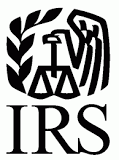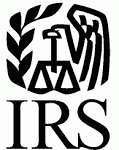The IRS recently published Revenue Procedure 2019-19, which makes significant improvements to the Employee Plans Compliance Resolution System (“EPCRS”) corrections procedure for qualified retirement plans.
The updated EPCRS correction procedure comes after the IRS made other changes last year, which require correction applications to be filed electronically as of April 1, 2019. The updated EPCRS provides new ways that Plan Sponsors can self-correct Plan errors without having to file a formal correction with the IRS. This means more ways to correct without having to tell the IRS about the failure and without having to pay the voluntary Correction Program (VCP) fees.
What’s New?
The new procedure permits plans to self-correct failures occurring in two broad categories that previously required VCP filings: problems with participant loans and plan amendments.
Loan Failures
Generally, when a participant fails to repay his loan on time, the total principal and accrued interest of the loan becomes taxable income to the participant in the year of default, or after the end of a short “grace period” after the default. Previously, once that grace period had ended without repayment, a formal VCP application was the only way to prevent the full taxation, even if the failure occurred because the plan sponsor failed to start the intended automatic deduction for the loan repayment on its payroll system.
The new correction procedure allows self-correction of loan failures if the failure relates to:
- A default on loan payments (if the five-year maximum repayment period has not expired);
- Allowing participants to have multiple loans even though not permitted under the plan or loan procedure;
- Providing a loan when the plan does not permit loans; or
- The failure to obtain spousal consent (assuming that the spouse is now willing to provide that consent—if not, VCP is required to repair this failure).
If a defaulted loan is self-corrected under the new procedure, the loan is not treated as taxable income to the Participant. This new ability to self-correct these failures and avoid the tax consequences is a significant improvement to the EPCRS options. If the loan default happened so long ago that the maximum five-year repayment period has already expired, the self-correction program may still be used to allow the income to be taxable in the year of correction, rather than the year of default.
Two other loan failures listed above—providing loans when the plan does not permit them or failing to limit the number of loans a participant takes—would not produce taxable income to the participant, but could threaten the tax qualification of the plan. This problem can now be corrected through self-correction using a retroactive plan amendment.
Note: self correction is still not an option if a plan sponsor allows participants to take loans in amounts that exceed the legal limits (generally, $50,000 or 50% of the participant’s vested account), loans that have repayment periods in excess of the five-year limit (or the extended period allowed for home loans), or loans that do not provide for level, fully amortized payments. Such failures must still be corrected through a VCP application.
While the IRS considers loans corrected under VCP to be fully corrected for ERISA purposes, the Department of Labor (“DOL”) does not give that same deference to self-correction under EPCRS. Therefore, if the plan sponsor or participant wants to be sure that the loan does not represent a prohibited transaction or that excise taxes are not accruing, a separate filing under the DOL’s Voluntary Fiduciary Correction Program may be required.
Amendment Failures
Historically, most failures to amend a plan had to be corrected by filing a formal VCP application. There were three exceptions, all relating to operating the plan not in accordance with the plan provisions. These exceptions included:
- allowing participants to enter the plan too soon (correct by amending the plan so that the eligibility requirements match what was already done);
- allowing participants to take loans or hardship distributions where the plan did not permit those distributions (correct by amending the plan to permit loans or hardship distributions); and
- failure to limit the compensation used for contribution allocations to the legal limit ($280,000 for 2019) (correct by amending the plan to increase the contribution for everyone to the amount needed to justify the allocation given to the highly paid person, when applying the compensation limit).
The new procedure allows self-correction by amendment in more situations.
Amendments to Match the Plan to Actual Operations or Late Adoption of Discretionary Amendments
Amendments may now be made to correct operational errors where the plan has been administered differently than the document provides or to correct the failure to timely adopt a discretionary amendment, if:
- The amendment conforms the plan document to actual operations;
- A benefit, right, or feature of the plan would increase as a result of the amendment;
- The increase applies to all eligible employees; and
- Providing the increase is consistent with the EPCRS correction principles.
Amendments to Cure Plan Document Failures
Amendments may also be used to self-correct plan documentation failures (i.e., failures relating to the inclusion of a provision that is prohibited or the omission of a provision required for plan qualification):
- If the failure is a so-called “nonamender failure,” i.e., a failure to timely amend the plan. This includes a failure to timely adopt an interim amendment required by the IRS.
- If the failure is that the sponsor of an individually designed plan (“IDP”) did not timely adopt an amendment needed to comply with an item that appeared on the Required Amendments List. Generally, the sponsor of an IDP must adopt such an amendment by the end of the second calendar year after the item first appears on the Required Amendments List.
Note: All corrections by amendment are significant failures. This means that, to self-correct these issues, the correction must be completed before the end of the second year following the year in which the error occurred.




